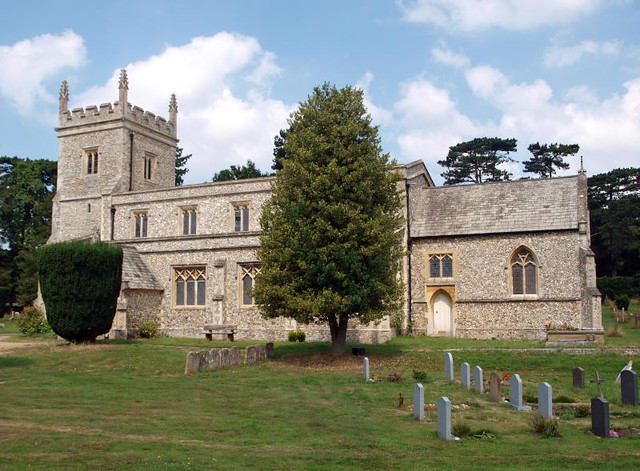I liked the exterior which is effectively an 1845 rebuilding but would have liked to be able to view the, admittedly dull sounding, interior.
ST LAWRENCE. 1845, by Talbot Bury, to whose memory (he died in 1877) a stained-glass window was put up in the church (N aisle). Bury’s building is flint, clearly in the Herts style, no longer with the freedom (and ignorance) of the earlier C19. Only the aisle windows have a tracery design not historically documented. - STAINED GLASS. E window by Lavers, 1856 (TK). - MONUMENT. Tomb chest with stone effigy of an unknown Knight in armour of c. 1400 (pointed bascinet).
Bovingdon. A more attractive shop window for his stamps and postal orders the Postmaster-General could scarcely have than we found here, a little old house with crooked chimneys, and casement windows. Another pretty picture is Renstreet Farm, black and white against a background of red-roofed barns, with a projecting storey on Elizabethan foundations. Long, straight avenues of shaped yews lead through an immense churchyard. There has been a church here since the Conquest, but this one is mid-19th century. Its high bench-ends catch our eye, and then we notice the stone figure of a man who may have fought at Agincourt. His name has vanished with his fame, but his jewelled belt still proclaims his rank, and a hound still guards his feet. Little hands smoothing his stone pillow are all that remain after 500 years of the angels that were once at his head.

No comments:
Post a Comment